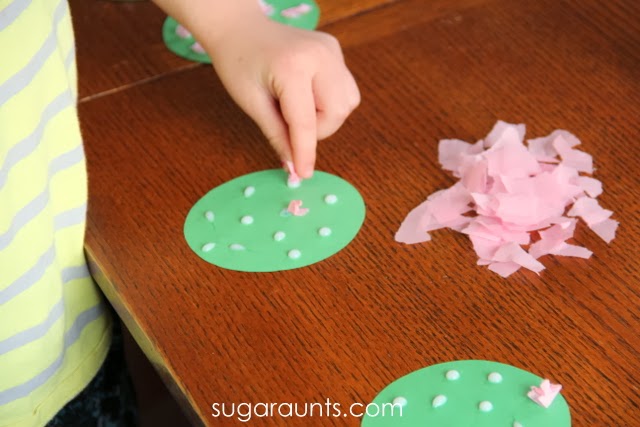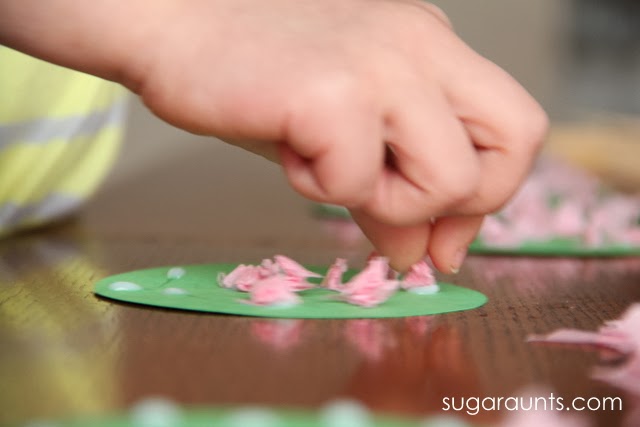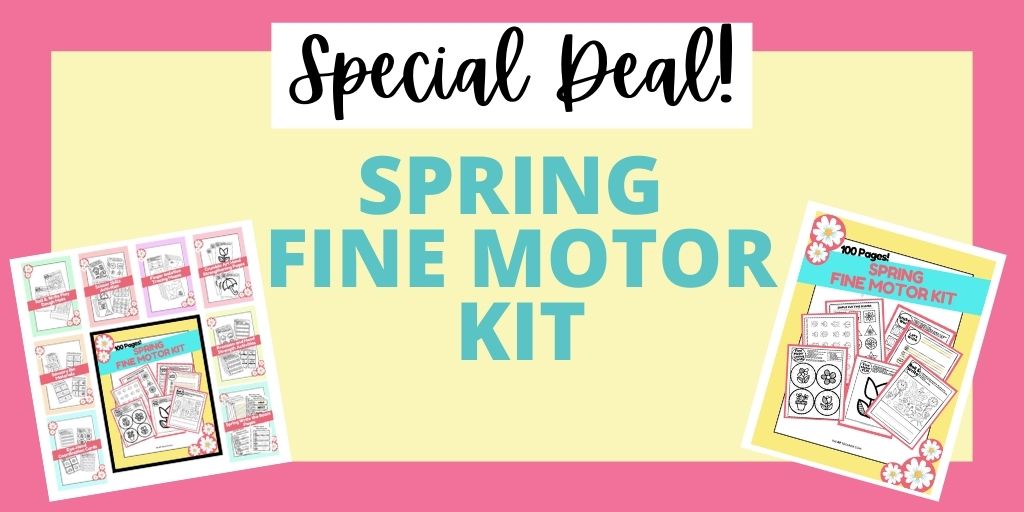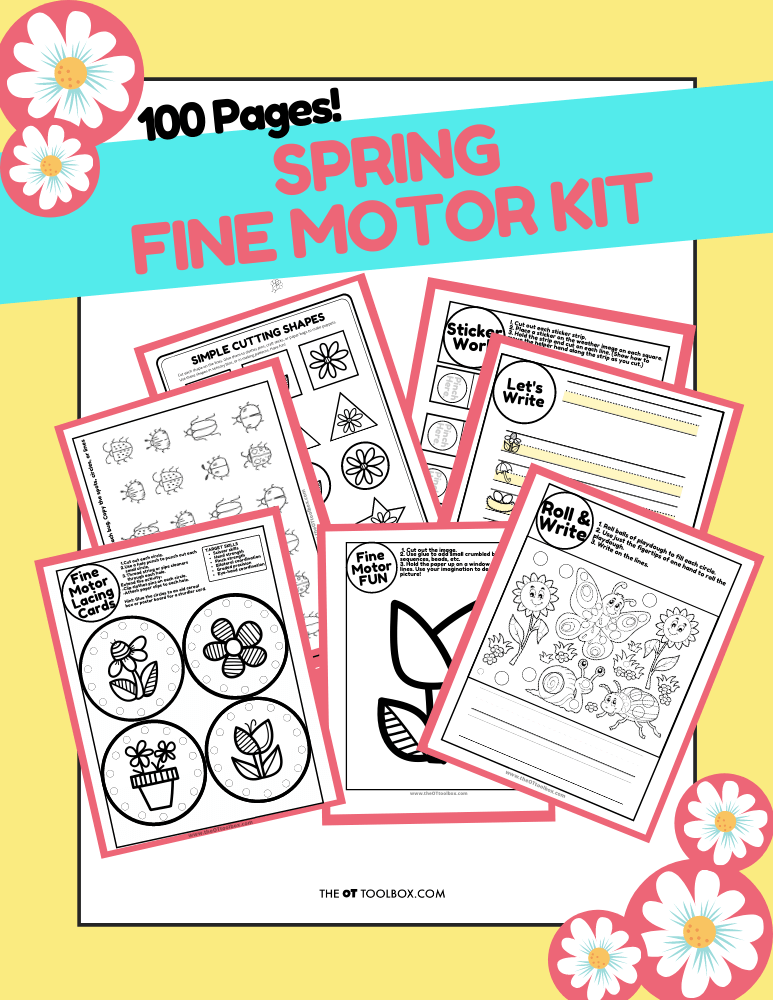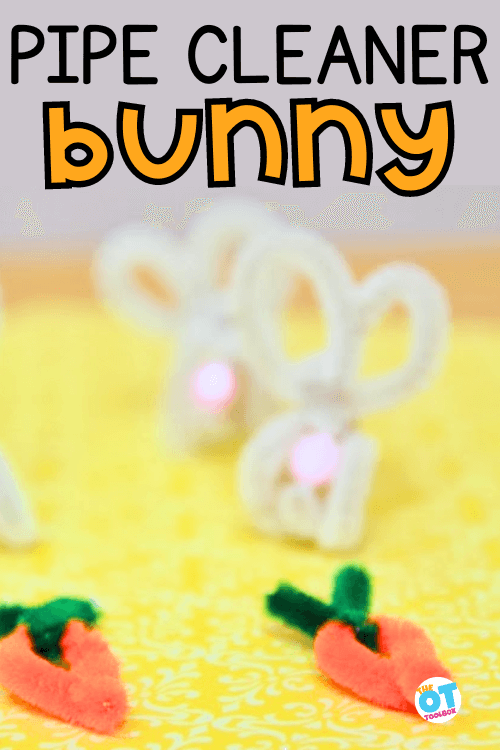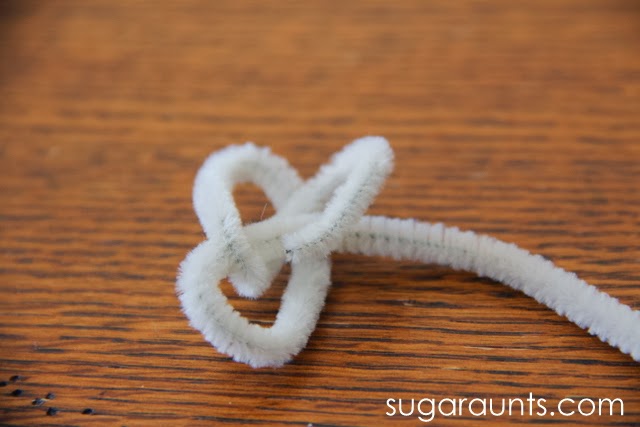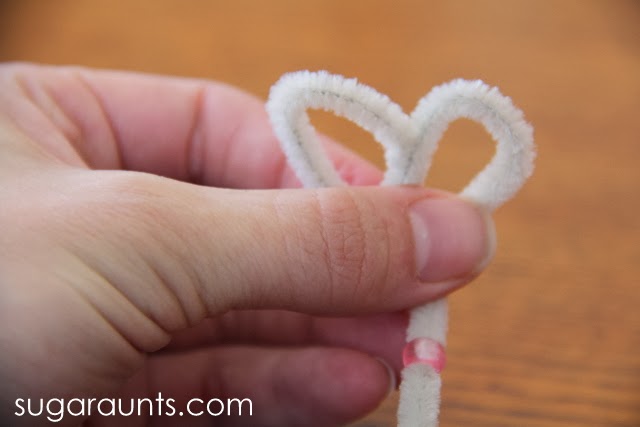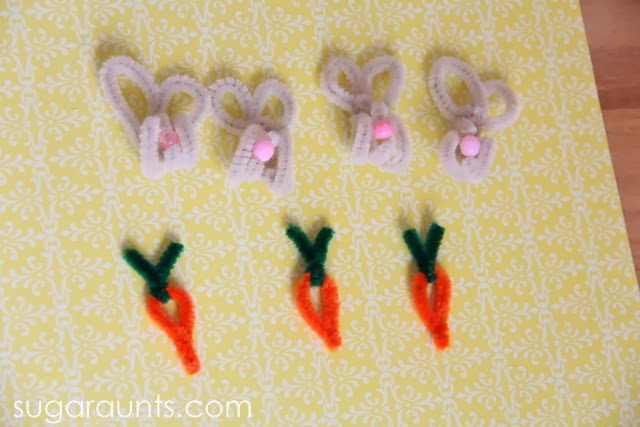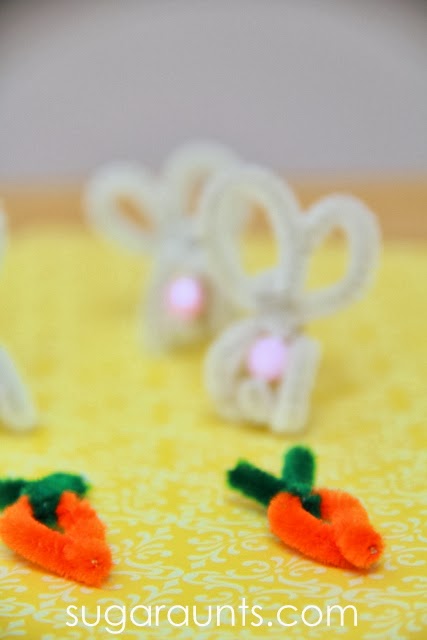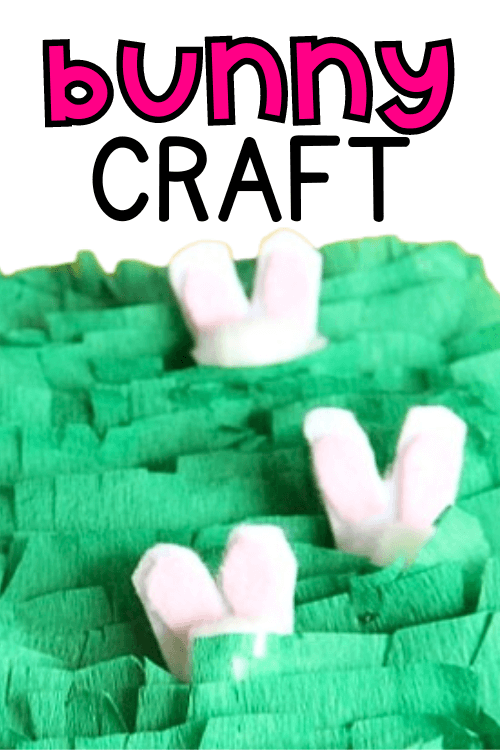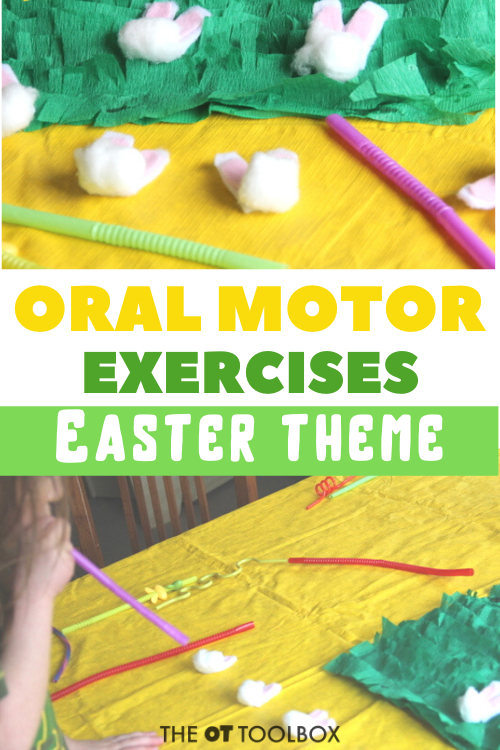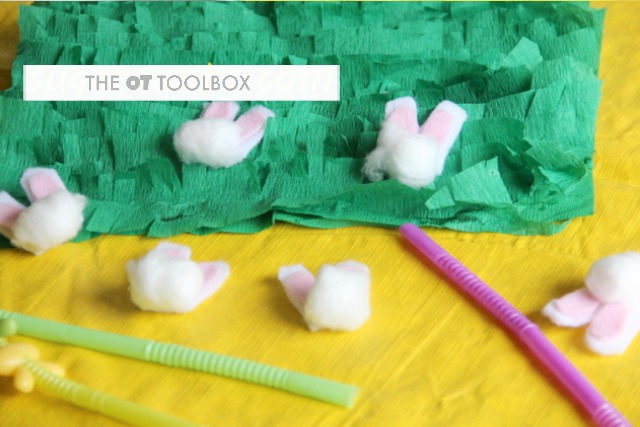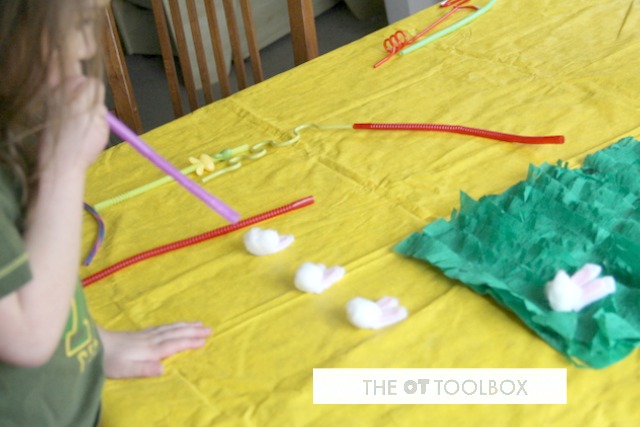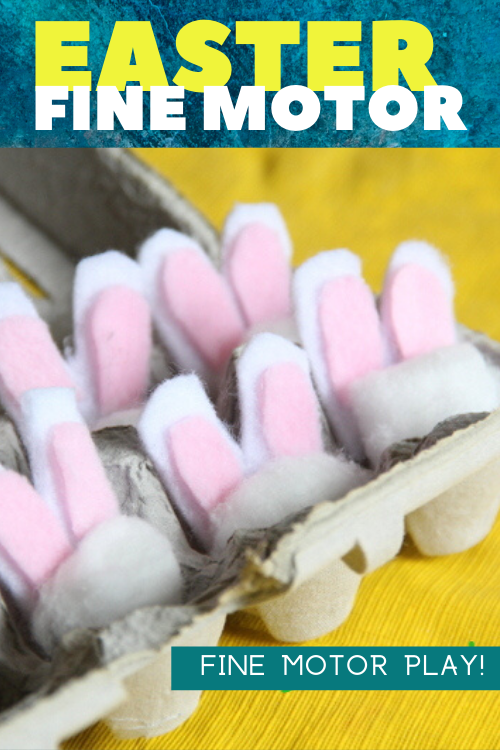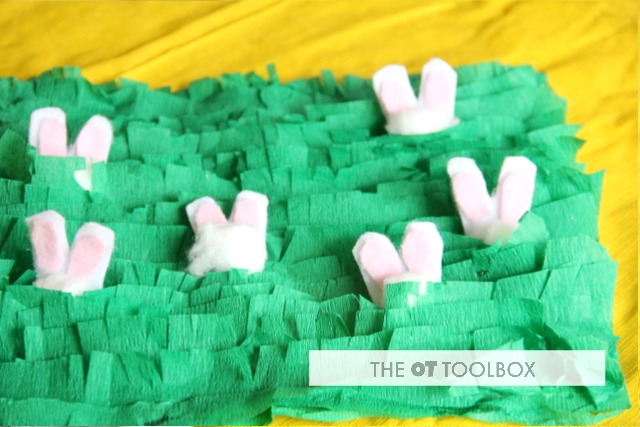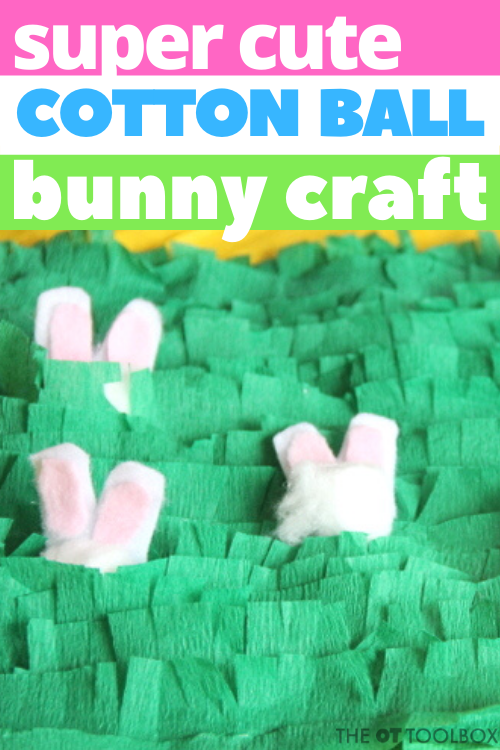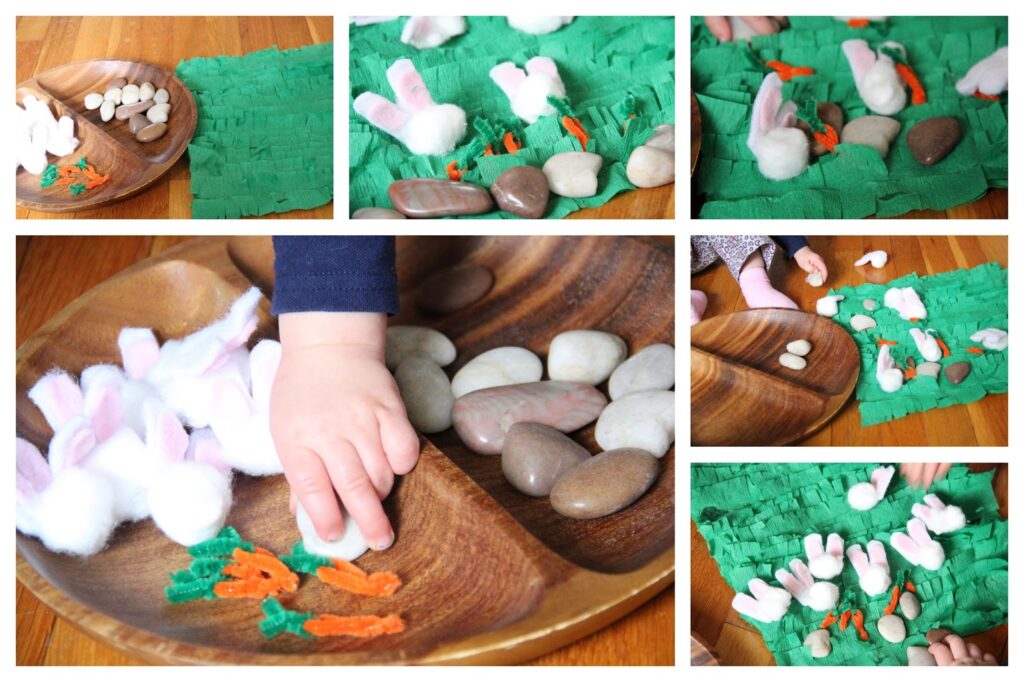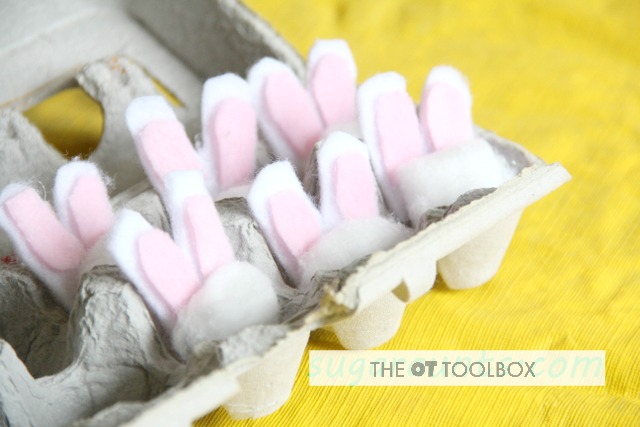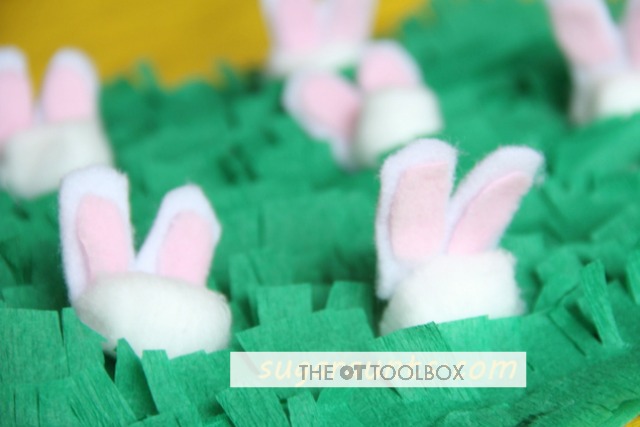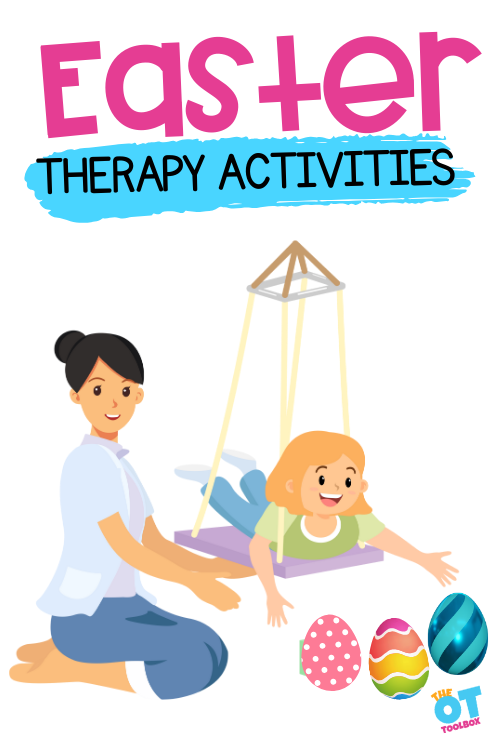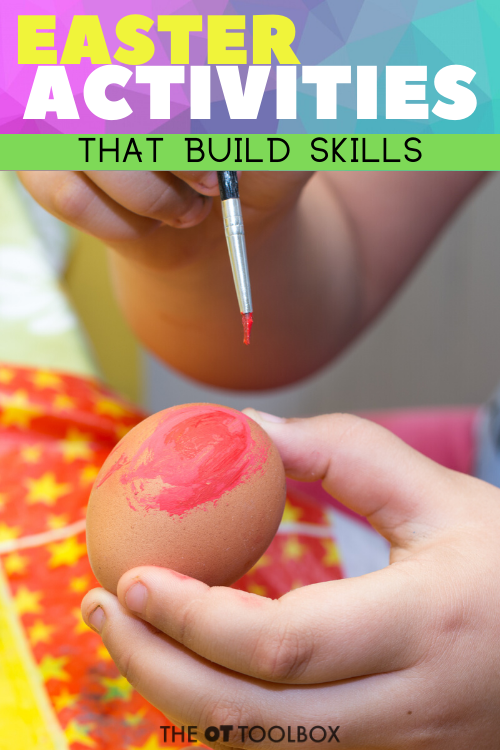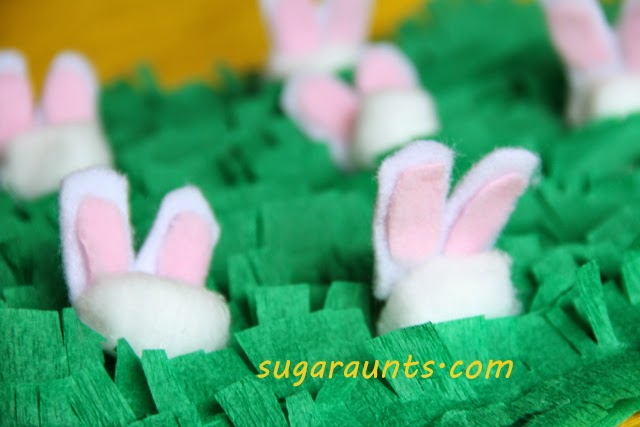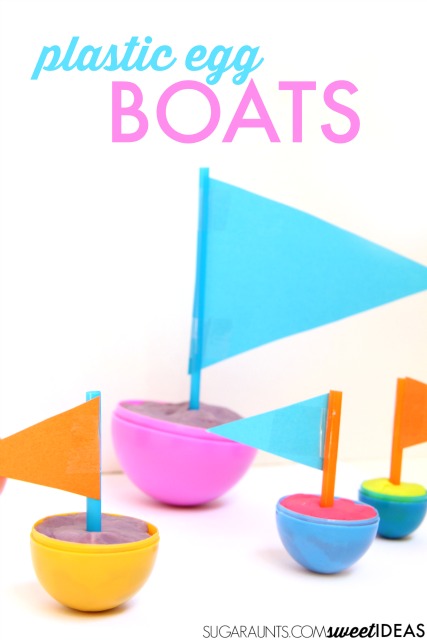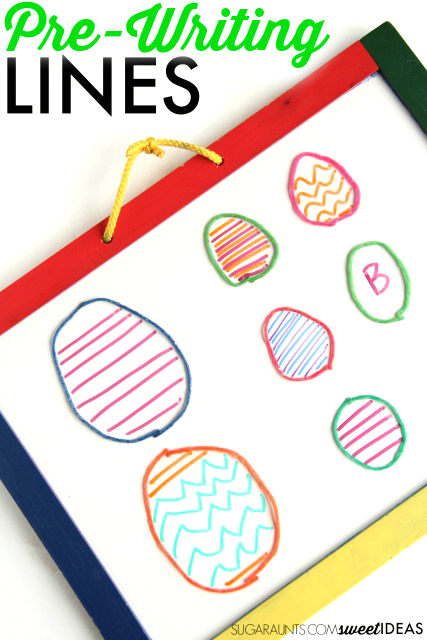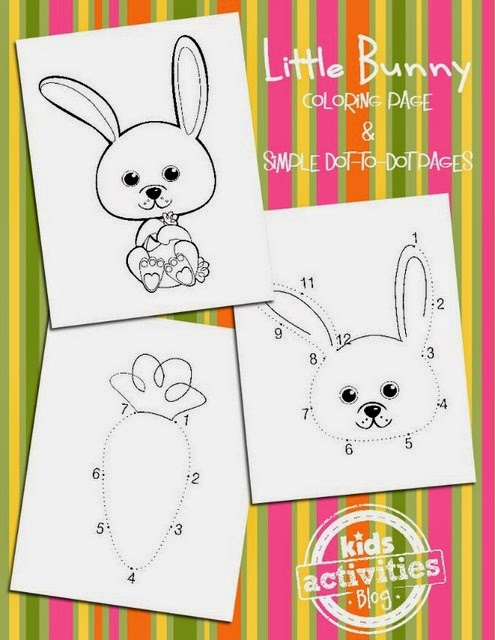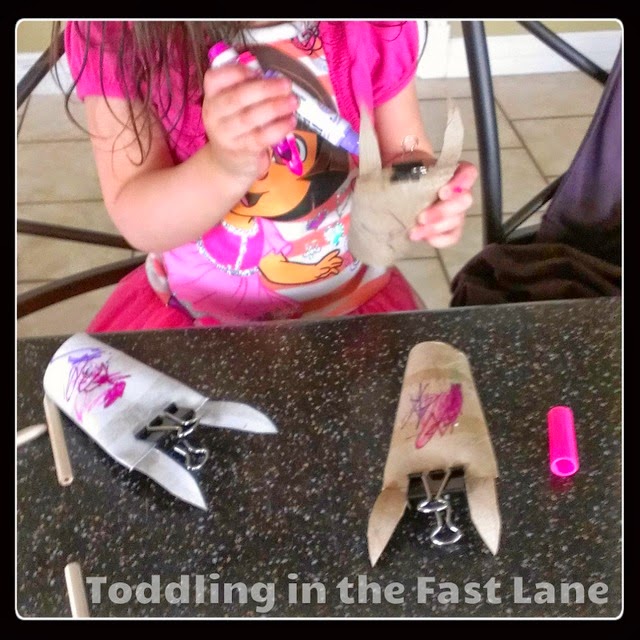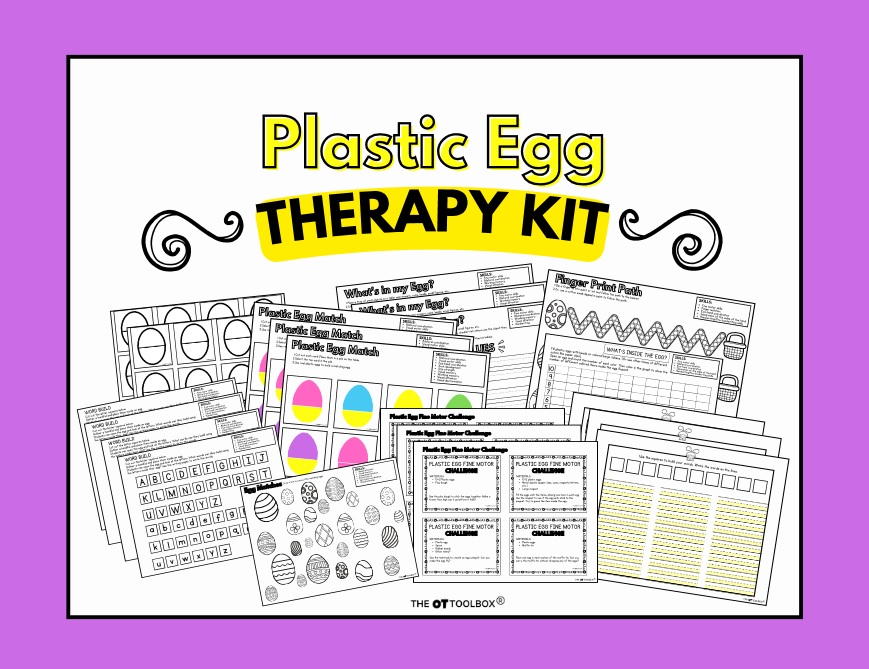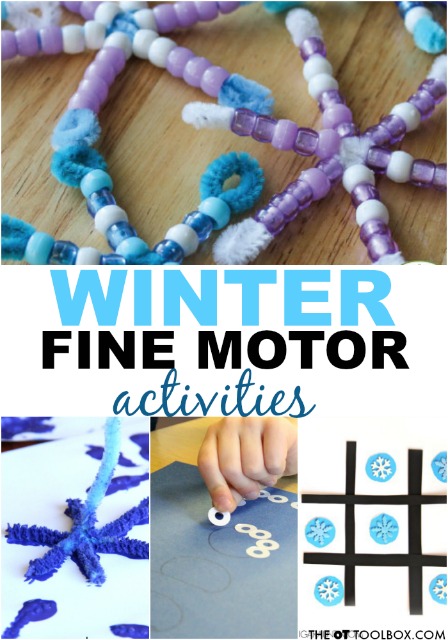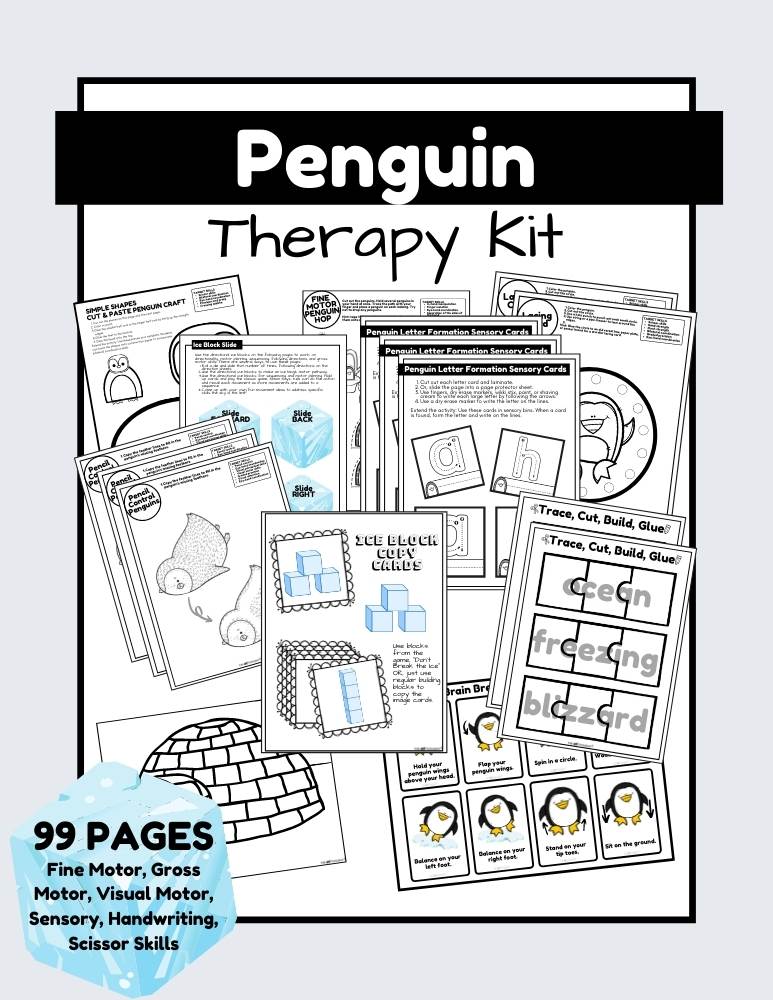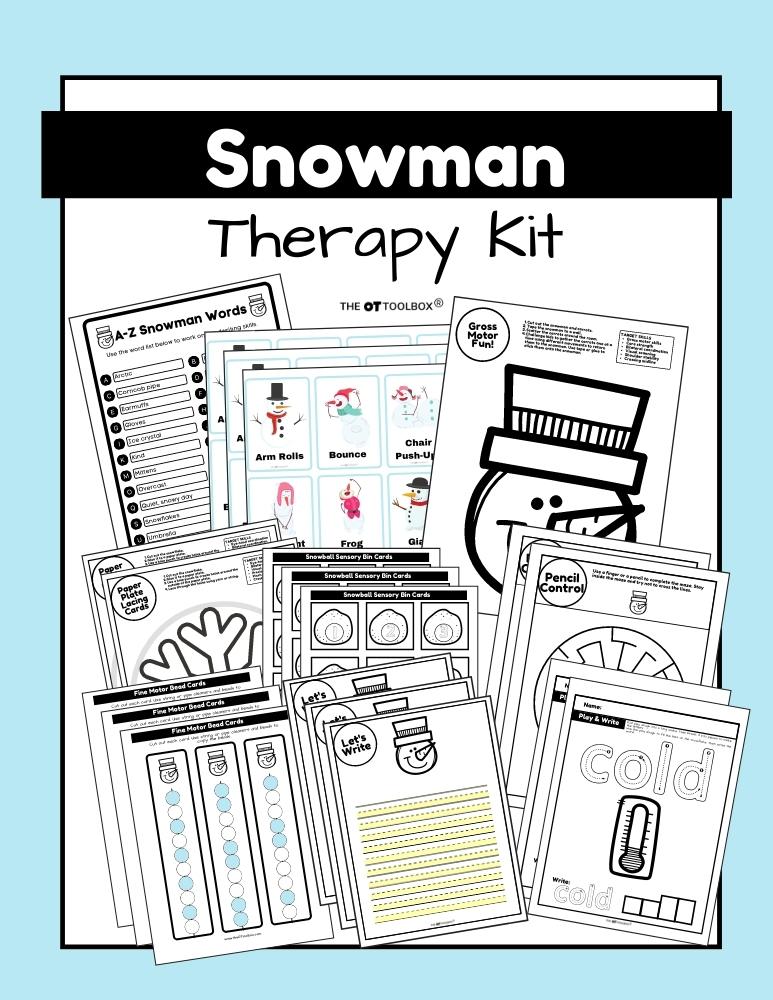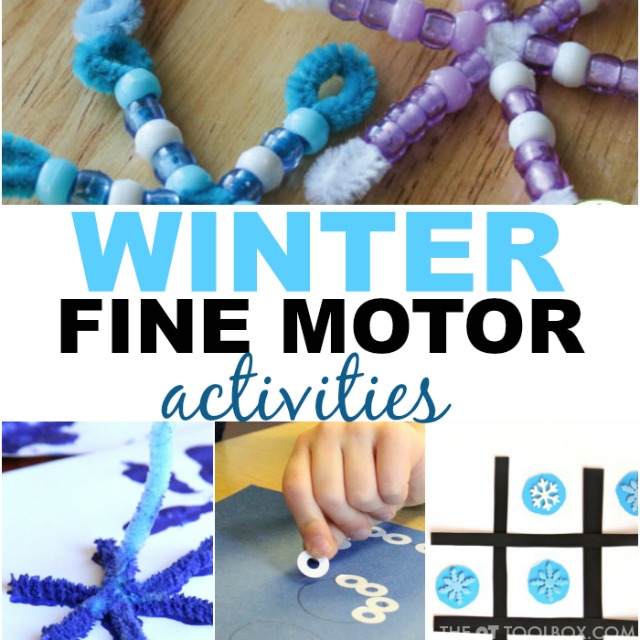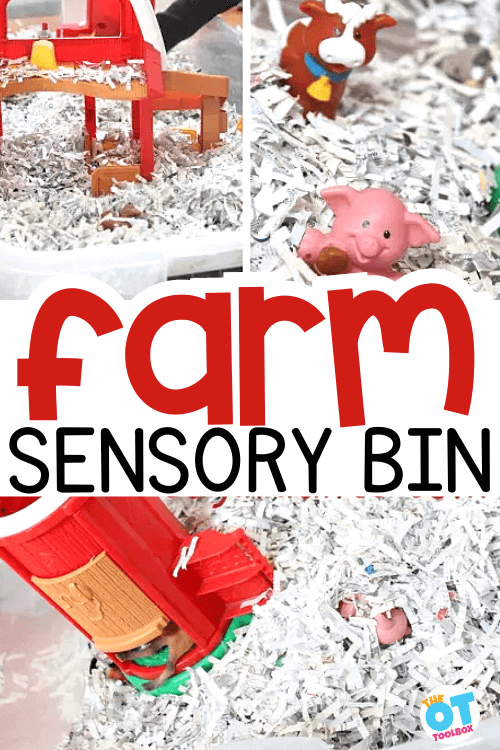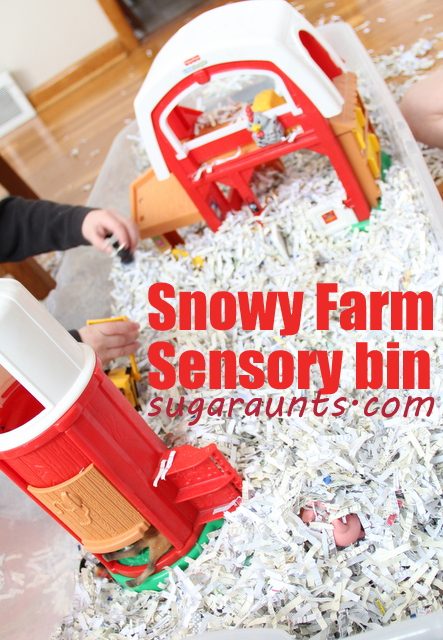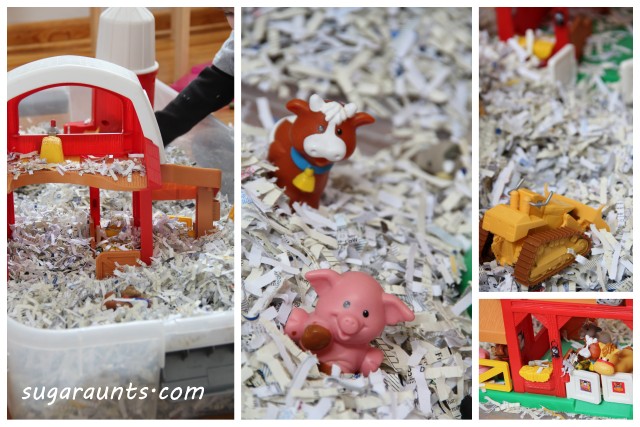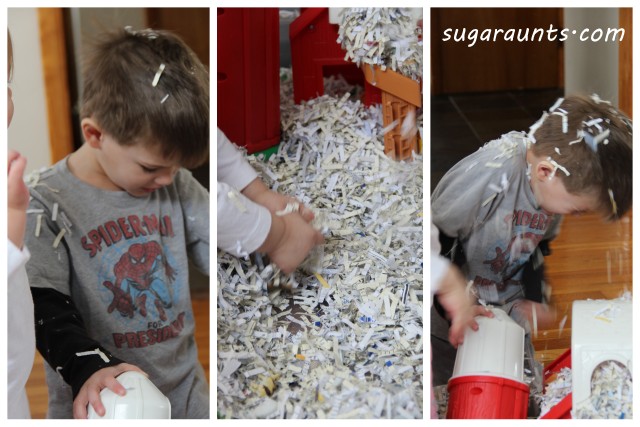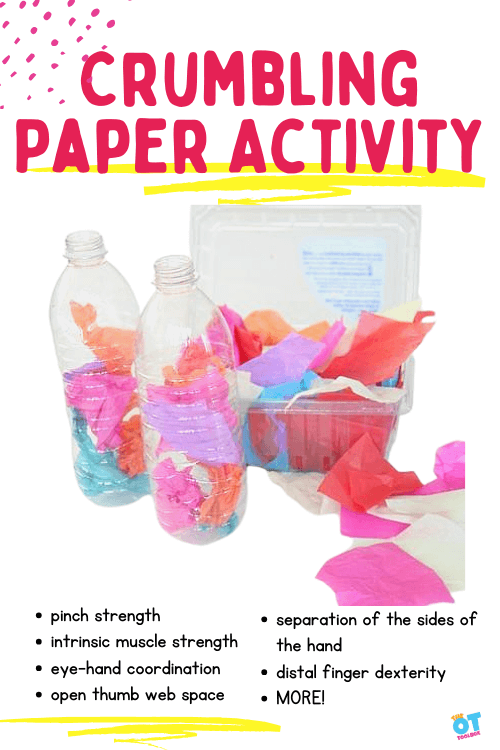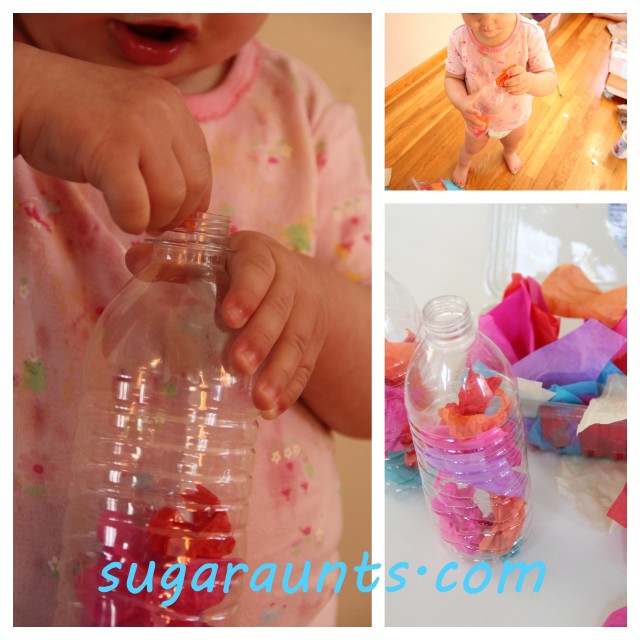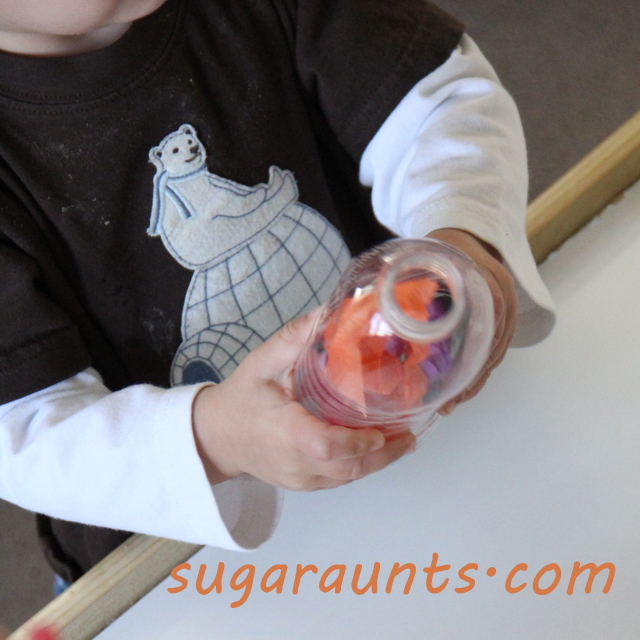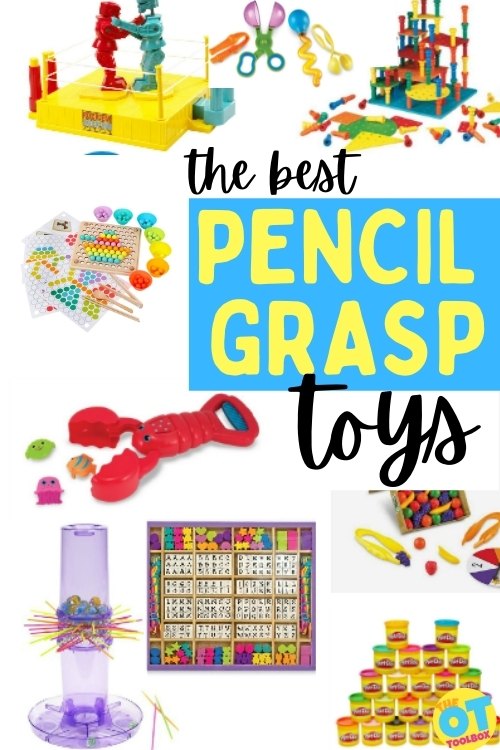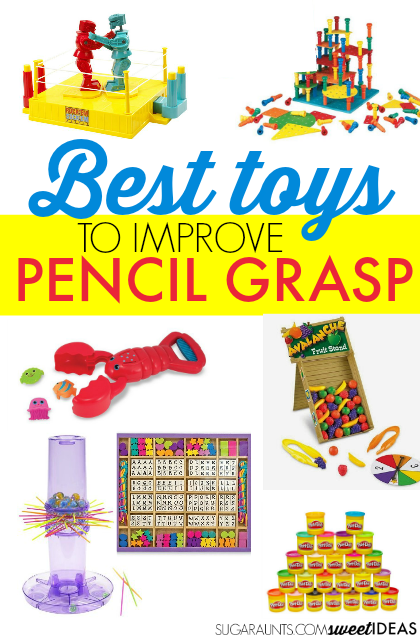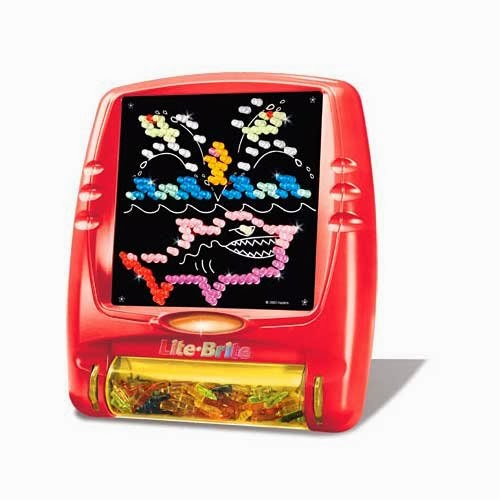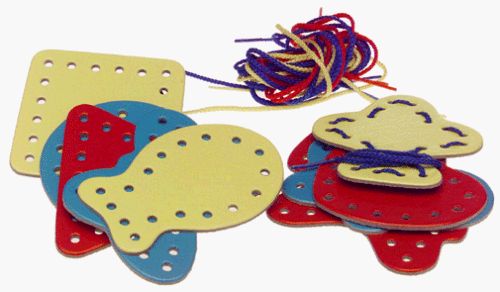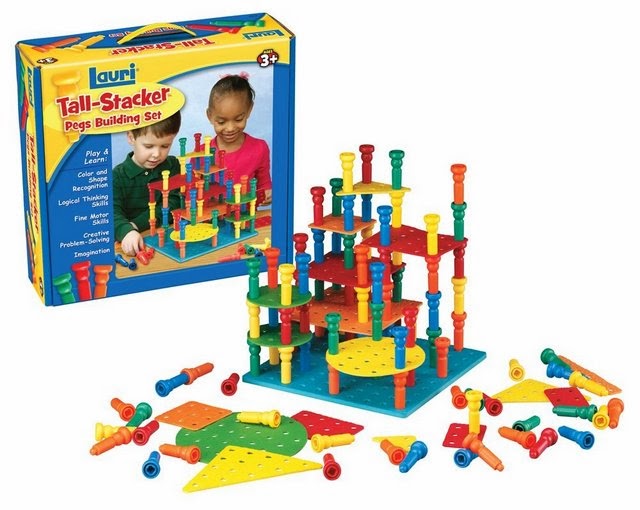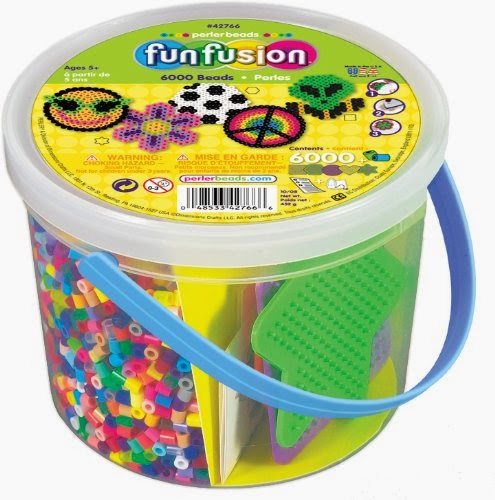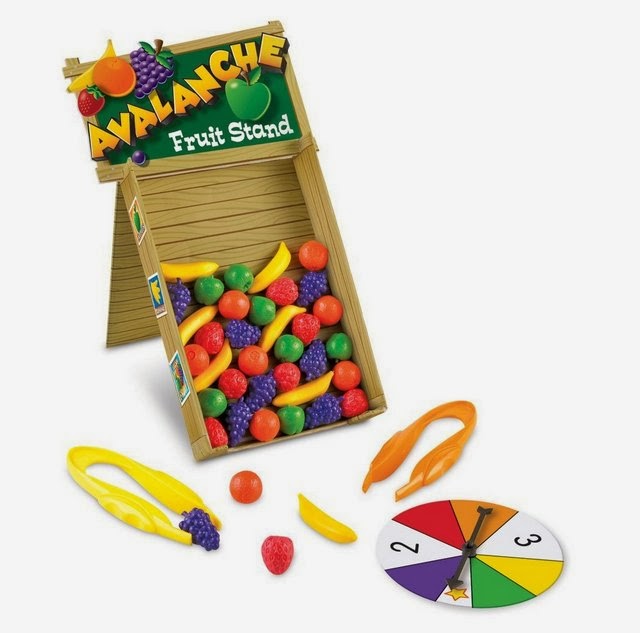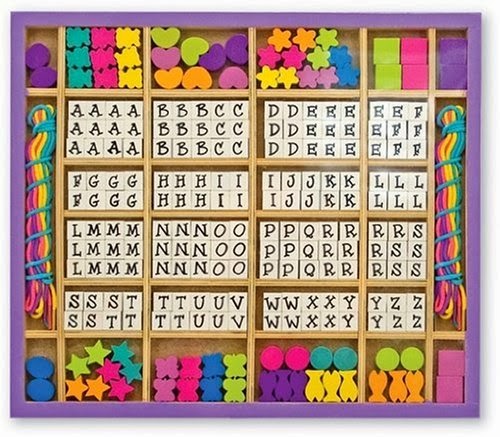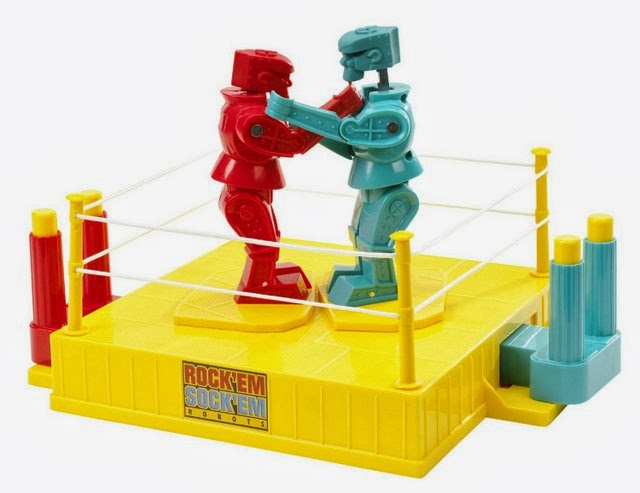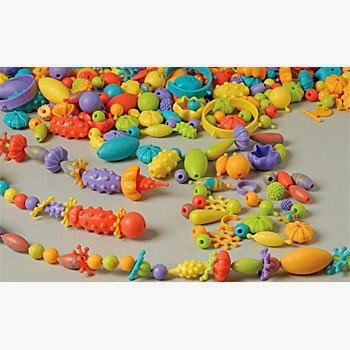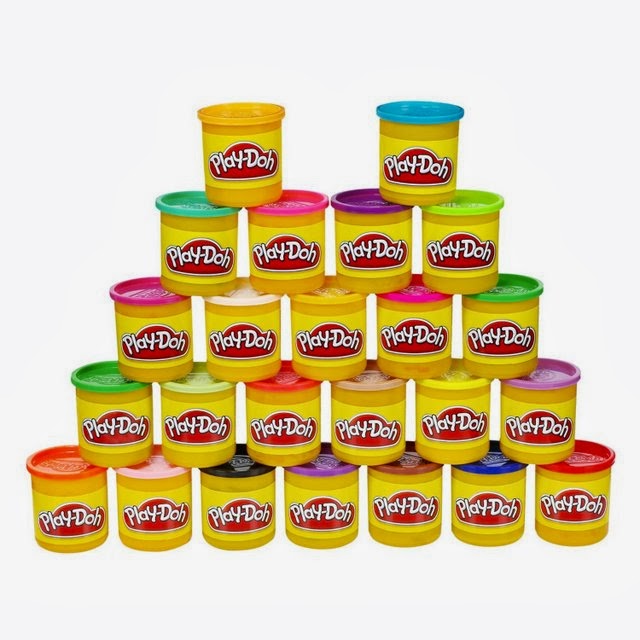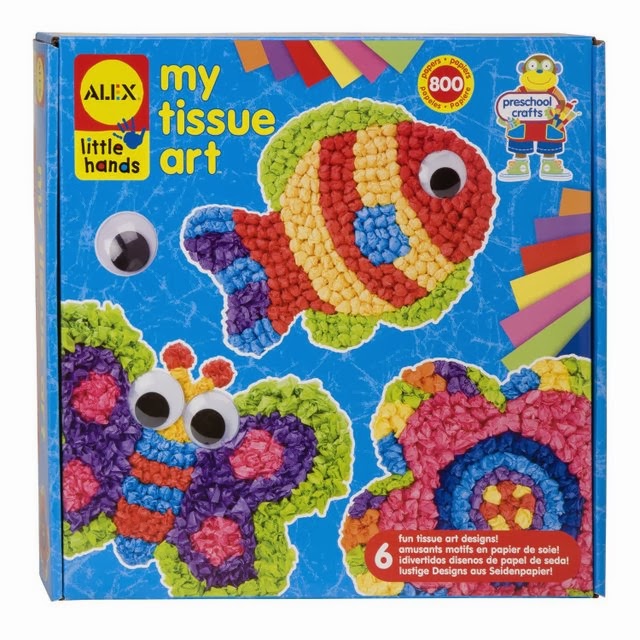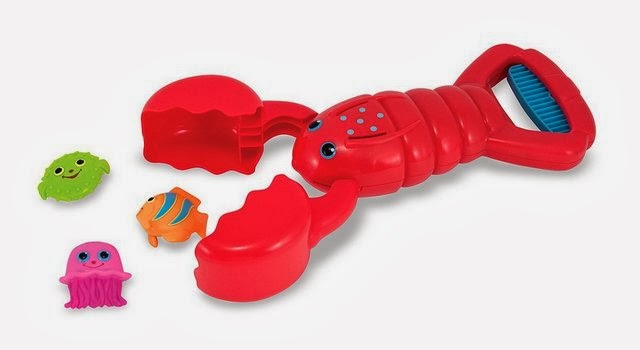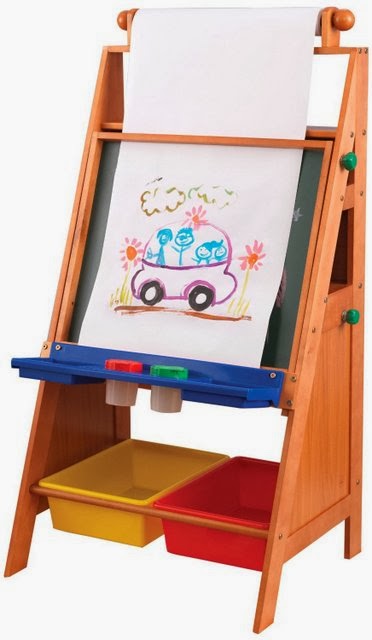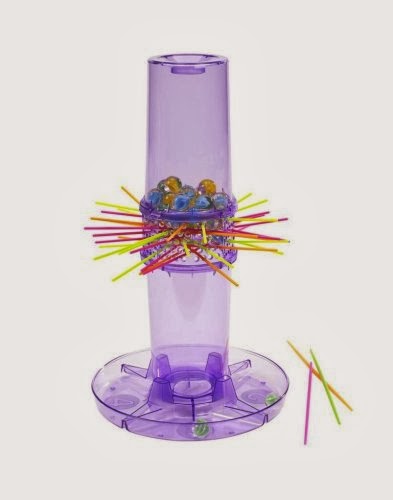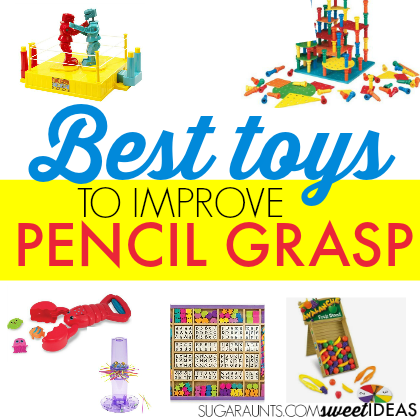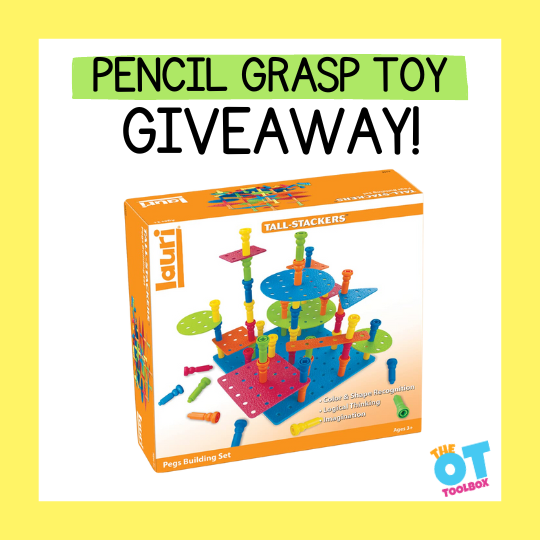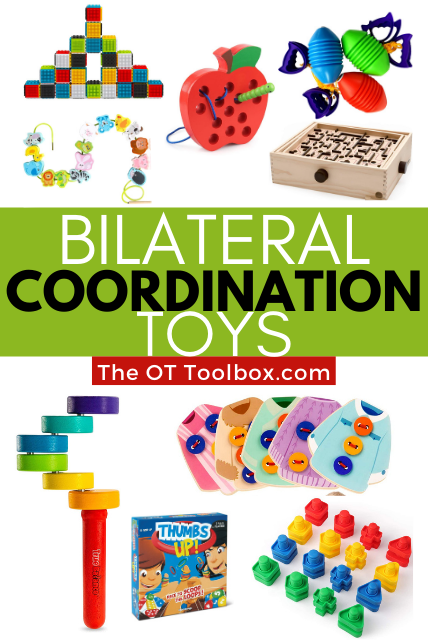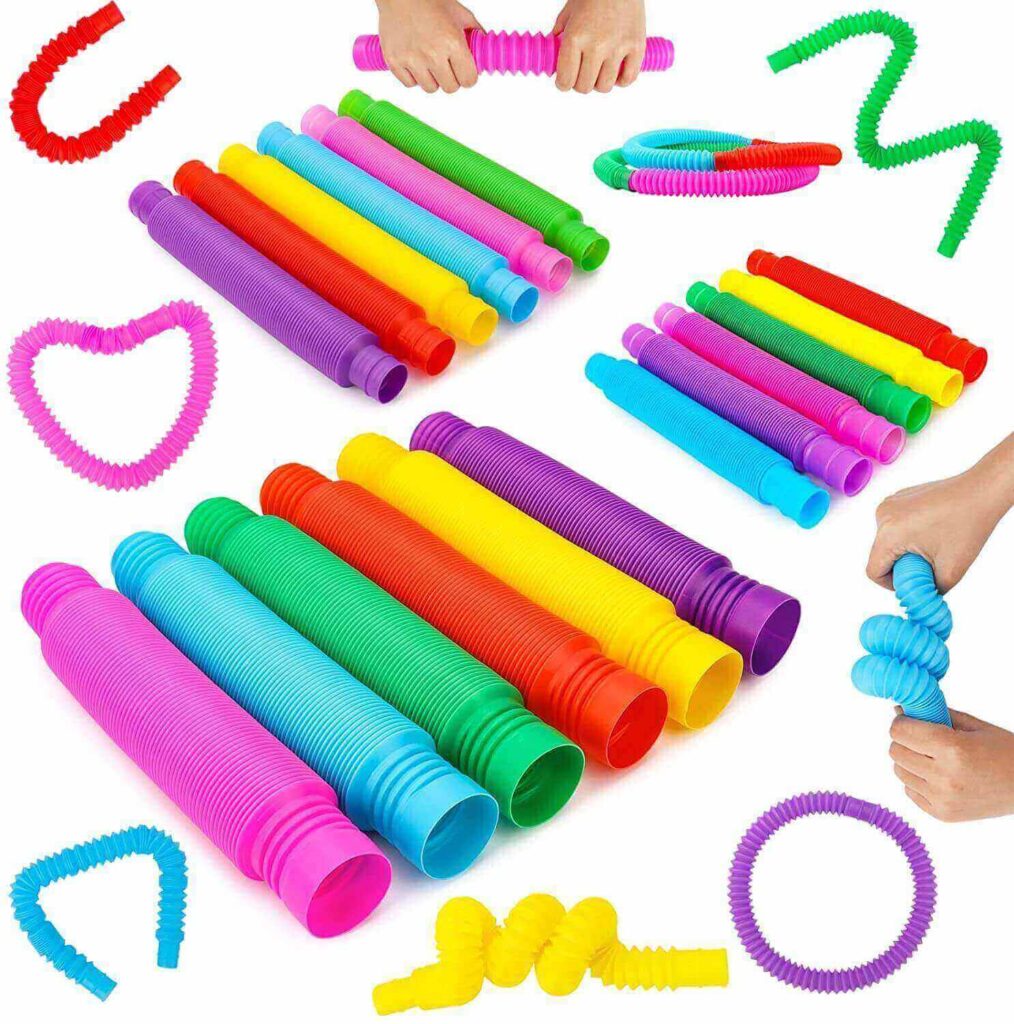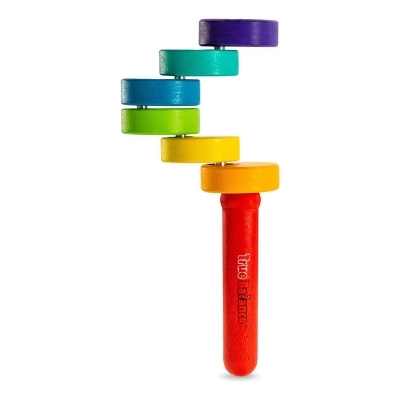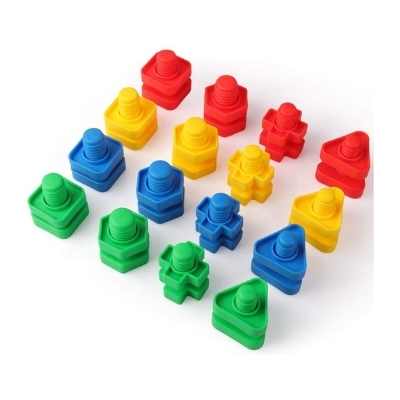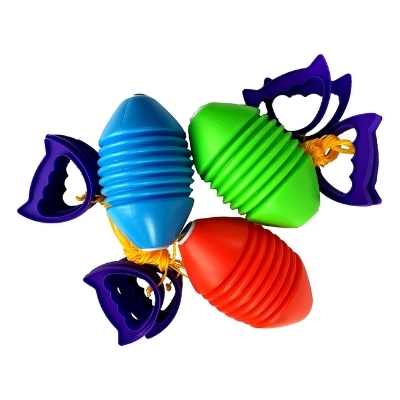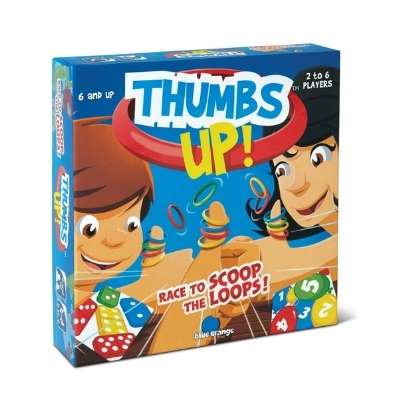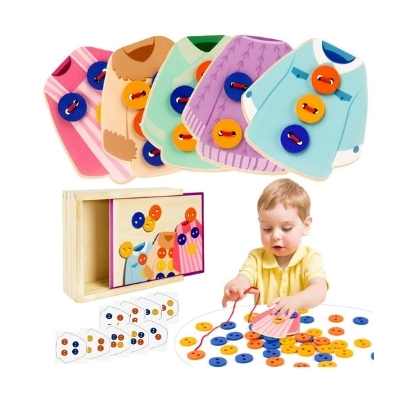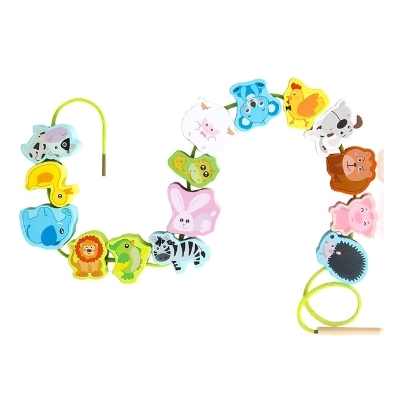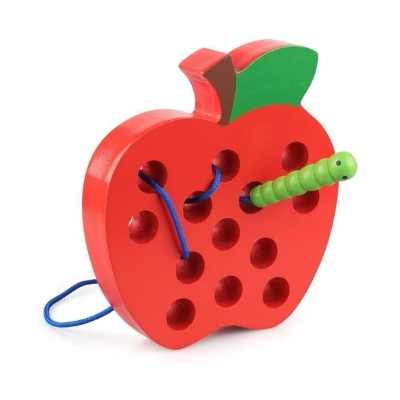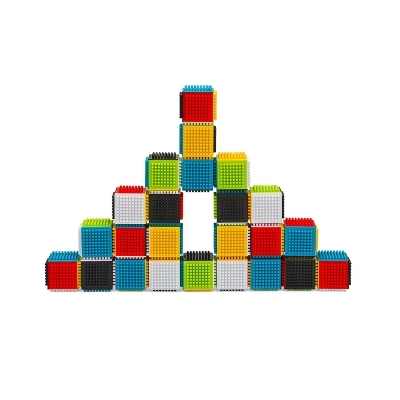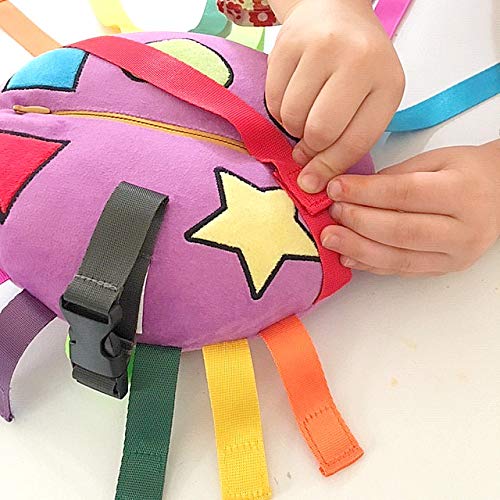Have you ever used pencil grasp toys to support development of handwriting? Helping kids with pencil grasp can be a challenge, so using motivating and fun activities to support the underlying skill areas is essential. Today, we’re going over the best occupational therapy toys that target pencil grasp development. Pencil grasp toys to challenge precision, dexterity, endurance, separation of the sides of the hand, and other skills needed for a functional pencil grasp. All of this can happen through play using toys to support stronger hands by focusing on grasp pattern development through play!
Amazon affiliate links are included in this blog post. As an Amazon Influencer, I earn from qualifying purchases.
Recently, we shared fine motor toy ideas and then gross motor toys. Both of these areas are closely related to a functional pencil grasp, so be sure to check out those toy suggestions, too.
Pencil Grasp Toys
We love coming up with fun play and craft activities designed to work on the development of an efficient grasp. Being the season of gifting to others, we thought it would be fun to bring you our top recommended toys to work on tripod grasp, intrinsic muscle strength, rotation of the pencil while handwriting, and an open thumb web space.
Children who have difficulty with handwriting may completely HATE to work on letter formation and pencil grip. Why not gift them with a fun toy this holiday that will work on the developmental skills necessary to improve their grip on the pencil? Make the exercise fun as they PLAY their way to a better pencil grasp!
Handwriting is more than just pencil grasp! Manipulating a pencil to write letters and numbers has a lot to do with visual perceptual skills. You’ll find easy and fun ways to work on visual perceptual skills through play here.
You will also love these Games to Improve Pencil Grasp
Best Toys to Improve Pencil Grasp
{Note: This post contains affiliate links.}
Toys That Improve Pencil Grasp
Coming up with this list, we thought about the skills needed for an appropriate pencil grasp and age-appropriate handwriting. This toy gift guide is broken down into toys that will help with different sets of problem areas when it comes to a poor pencil grasp.
Let’s take a closer look at toy suggestions for these areas:
- Toys for Tripod Grasp
- Toys for an Open Thumb Web Space
- Toys for Hand Strength
- Toys for Extended Wrist
Toys for Tripod Grasp
Tripod grasp: The most efficient way to hold the pencil when writing is with a dynamic tripod grasp. While not necessary…a functional grasp works, too…a tripod grasp is a term we’ve probably all heard described before. So WHAT is a tripod grasp?
A Tripod grasp starts with a nice round circle made with the thumb and index finger. The pencil is pinched with the tips of the thumb and index finger and held close to the point of the pencil. The pencil is resting on and assisted by the middle finger. The ring finger and pinky fingers are tucked into the palm. All movement should happen with the fingers and thumb. The wrist and arm should not move while writing, coloring, or drawing.
Often times, new pencil and crayon users will hold the writing utensil in a different way. You might see four fingers opposing the thumb to hold the pencil. You might see the pencil positioned in the knuckles between the index and middle fingers. Maybe they hold the pencil away from the tip where the lead is and instead hold it in the middle of the pencil shaft. There are SO many variations of awkward and inefficient pencil grasps. If your little hand writer is showing some version that affects their letter formation and pencil control, try a few of these fun toys…
A few toys that help to encourage a tripod grasp:
Light Brite: (affiliate link) Picking up and manipulating those little colored pegs encourage a tripod grasp. Pushing them through the paper and into the holes is a great resistive exercise…disguised as FUN!
We have this Lite Brite Flatscreen – Red (affiliate link) from Hasbro and love making pictures with the pegs! When the child holds the pegs in his hand, it’s a great way to encourage the ring finger and pinkie finger in a tucked position. Show your child how to pick up a handful of pegs and “squirrel them away” in their palm while they push one peg into the board. What a great fine motor exercise! Not to mention, the dots of the guide paper is a great visual motor activity…so important in handwriting!
Lacing Cards: (affiliate link) Lacing cards are a great way to encourage a tripod grasp. This set of Lacing Shapes (affiliate link) from Patch Products come in simple shapes with bold colors. The child must hold the tip of the string in a dynamic tripod grasp to push through the holes of the card. If your child has their thumb squashed up against their index finger while threading the cards, be sure to show them how to make a nice round circle for an easier time.
Peg Boards: (affiliate link) Grasping pegs encourage a tripod grasp especially while pushing them into the holes of a peg board. Here are homemade pegboard ideas and even a precision pegboard you can make using perler beads (see below).
This Lauri Tall-Stacker Pegs Building Set (affiliate link) from Lauri is great for building peg towers while learning colors and shapes.
Older kids might love Fusion Beads like the Perler Beads 6,000 Count Bucket-Multi Mix (affiliate link) from Perler.
Spike the Fine Motor Hedge Hog– (affiliate link) This fine motor toy builds a stronger tripod grasp, and when positioned appropriately, can place the wrist into an extended position, too. This helps to further refine precision movements for accuracy and dexterity. These are great skills to carry over to pencil control and pencil movements during handwriting tasks.
Learning Resources 3 Prong Tong– (affiliate link) This tong tool promotes a better grasp on objects…but only if the hand is positioned correctly. If you allow kids to just pick up the 3 prong tongs and start using them, they likely will position the tong into their hand with a gross grasp, or by using all of the fingers along the length of the prong. This can actually strengthen the wrong muscles, and promote an ineffective motor plan that becomes muscle memory when writing with a pencil.
When kids use these tongs, they should have their hand positioned almost under the tongs, as if it were a pencil. When used this way, the tongs can strengthen the intrinsic muscles and promote a tripod grasp. These 3 prong tongs can work well when used correctly, but be sure to work along side a child with this one.
Toys for Open Thumb Web Space
Sometimes you will see a child who is holding their pencil with a closed web space. This happens when the thumb web space is the area between the thumb and the index finger. If the thumb is squashed up against the side of their index finger, they are not able to manipulate the pencil with small movements. They might move their whole arm to make letters instead of just the hand. A closed web space is an inefficient way to grasp the pencil and will lead to poor handwriting. This type of positioning requires activities that strengthen and stabilize the thumb.
A few toys that help encourage an open web space:
Tweezer Games: Tweezer activities promote an open web space and stabilization of the thumb. This Avalanche Fruit Stand (affiliate link) from Learning Resources is a colorful way to encourage an open web space. The vertical surface is perfect for encouraging an extended wrist.
Bead Sets: (affiliate link) Stringing beads is a good way to encourage an open web space. The child must hold the bead and string between their thumb and index fingers. Collapsing of the thumb web space will happen when the child demonstrates weakness in the muscles of the thumb. Beading is a repetitive activity and promotes strength.
This Melissa & Doug Deluxe Wooden Stringing Beads with over 200 beads (affiliate link) from Melissa & Doug has over 200 beads in different colors and shapes, and even letters! You could even form sentences for the child to copy and practice their improved pencil grasp!
Rock ‘Em Sock ‘Em Robots: (affiliate link) Often times, a child will wrap their thumb around the index finger when they are writing with a pencil.. This indicates instability in the thumb and the muscles that allow for smooth pencil motions.
Pushing down on the buttons of the Rock ‘Em Sock ‘Em ROBOTS Game (affiliate link) from Mattel really strengthens the muscles of the thumb and allows for more stability leading to an open web space and ultimately more fluid motions of the pencil in letter formation. Plus, this game is just plain old FUN for kids of all ages!
Toys for Hand Strength
Hand Strength: If a child has weakness in their hands, they may complain that their hand is tired when they write or color. Then, to compensate for muscle fatigue, they resort to an inefficient hand grasp. They may grip the pencil with four fingers or with their whole palm. many times, a child will start off with a nice tripod grasp and then switch to a less efficient grasp…or even switch hands! Do they complain that their hand is tired or that it hurts? These kiddos need to work on hand strength. To allow for increased endurance when writing and coloring, this child would benefit from strengthening exercises.
A few toys that help encourage hand strength:
Pop Beads: (affiliate link) Pushing pop beads together is a perfect way to strengthen the intrinsic muscles of the hands including the arches of the hands.
Pop beads are such a fun toy that can be used to make patterns, different lengths, bracelets, necklaces, and even shapes. This Pop Beads (affiliate link) from ConstructivePlaythings are unique in their shape, color, sizes, and textures. A twist on the classic bead, this set will excite girls and boys of all ages. Be sure to shop for size-appropriate beads for your child’s hands.
Play-Doh: (affiliate link) Play dough is the ultimate open-ended toy for hand strengthening. There are unlimited ways to play all the while encouraging hand development.
We love this Play-Doh 24-Pack of Colors(affiliate link) for lots of creative play! Hide coins, beans, or beads in the dough and allow the child to find the items. Roll small balls of dough using just the thumb, index, and middle fingers.
Roll a play dough snake with the dough and have the child pinch the dough between their thumb and index finger. Just get creative and make some things with your play dough. Most of all, have fun!
Tissue Paper Art: (affiliate link) There is possible no better art project for hand strengthening than tissue paper art! Crumbling little bits of tissue paper is perfect for strengthening the small muscles of the hand.
Encourage your child to use just their finger tips to crumble the bits of tissue paper rather than two hands to crumble. This ALEX® Toys – Early Learning Tissue Paper Art -Little Hands 521W (affiliate link) from Alex Toys is bold, colorful and just plain fun art! Even better for the intrinsic muscles of the hands is tearing bits of paper before crumbling.
Squeeze Toys:(affiliate link) a gross grasp is using the whole hand to squeeze and flex into a grip.
What a great way to strengthen the muscles of the hands! This Melissa & Doug Louie Lobster Claw Catcher (affiliate link) from Melissa and Doug is a fun way to encourage hand strength and endurance for coloring and writing.
Geoboard Activities– (affiliate link) Using a geoboard supports hand strength to enable endurance in handwriting. Manipulating the rubber bands promotes finger isolation, open thumb web-space, and and extended wrist.
Learning Resources Helping Hands Fine Motor Tool Set Toy– (affiliate link) This set of fine motor tools includes an eye-dropper, scissor scoops, and tongs. The sensory bin scoops and tools support hand strength through manipulating small objects or water.
These tools are a great way to strengthen the exact muscles needed for a functional pencil grasp.
Toys for Extended Wrist
Extended Wrist: An Extended wrist is a slightly bent back wrist. When a child’s hand is bent forward toward the palm, they typically exhibit inefficient grasp on the pencil and weakness in the hand. A slight bend in the wrist towards the back of the hand (bent up toward the ceiling when writing) allows for better movement and flow of the fingers when forming letters. Often times a child with a poor handwriting demonstrates a “hooked wrist” or a flat wrist and it leads back to inefficient control of the pencil and messy handwriting.
A few toys that help encourage an Extended Wrist:
Easel: (affiliate link) An easel can be used in so many ways while encouraging an extended wrist. Paint, draw, color, or write on the elevated surface. We love taping contact paper to our easel and sticking all kinds of craft supplies.
This really encourages an extended wrist while using a tripod grasp or tip to tip grasp to manipulate little items (think tissue paper, sequins, foil squares…the possibilities are endless!) This Easel (affiliate link) is great for extended wrist activities. And, it even folds down to reveal a desk surface. It’s the perfect gift to promote improved handwriting!
Ker Plunk: (affiliate link) The Ker Plunk Game (affiliate link) from Mattel encourages an extended wrist as the child pushes the sticks into the holes of the game. They are encouraged to use a tripod grasp to hold the sticks as well. Rotating the sticks encourages two types of in-hand manipulation.
Take this game a step further in handwriting exercise for strengthening and play laying down on the floor, propped up on your elbows. Getting down on the floor to play will activate the large muscles of the back and the shoulder girdle to improve precision in pencil grasp.
Montessori Boards-(affiliate link) Precision and dexterity activities are needed for pencil grasp and when you add in dexterity tasks and manipulation of tongs, spoons, or tweezers to move and place objects, it’s a win-win.
This precision Montessori board (affiliate link) builds the skills needed for pencil grasp: a stabile wrist, in-hand manipulation, open thumb web space, and dexterity.
Looking for a few activities to improve handwriting skills? Check out our round-up of the best handwriting activities from our blog and these other toy suggestions:
More Therapy Toy Ideas
Want to find more therapy recommended toys to help kids develop specific skills? Check out the list of skill areas below.
- Fine Motor Toys
- Gross Motor Toys
- Pencil Grasp Toys
- Toys for Reluctant Writers
- Toys for Spatial Awareness
- Toys for Visual Tracking
- Toys for Sensory Play
- Bilateral Coordination Toys
- Games for Executive Functioning Skills
- Toys and Tools to Improve Visual Perception
- Toys to Help with Scissors Skills
- Toys for Attention and Focus
Printable List of Toys for Pencil Grasp
Want a printable copy of our therapist-recommended toys to support pencil grasp?
As therapy professionals, we LOVE to recommend therapy toys that build skills! This toy list is done for you so you don’t need to recreate the wheel.
Your therapy caseload will love these PENCIL GRASP toy recommendations. (There’s space on this handout for you to write in your own toy suggestions, to meet the client’s individual needs, too!)
Enter your email address into the form below. The OT Toolbox Member’s Club Members can access this handout inside the dashboard, under Educational Handouts. Just be sure to log into your account, first!
Pencil Grasp Toy Giveaway
Today’s toy item is a (affiliate link) Peg Board Set.
As we discussed before with handwriting skills, children may strongly dislike working on their pencil grip if they struggle with handwriting. Therefore, activities need to be meaningful and motivating to keep the child engaged! With the Peg Board Building Set, children have the chance to be creative and build pegboard towers while also working on their pencil grasp without even realizing it! Grasping the pegs will encourage them to use a tripod grasp, especially when pushing them into the holes of the peg board! With 100 pegs in this set, the creations are endless!
Want to enter our Therapy Toys and Tools Giveaway for a chance to win a pencil grasp toy? Enter your email address into the form below. You’ll also get a free printable list of pencil grasp toys.
This giveaway runs from 12-5-23 through 12-5-23. A winner will be chosen on 12-6-2023.
Enter all the giveaways here:
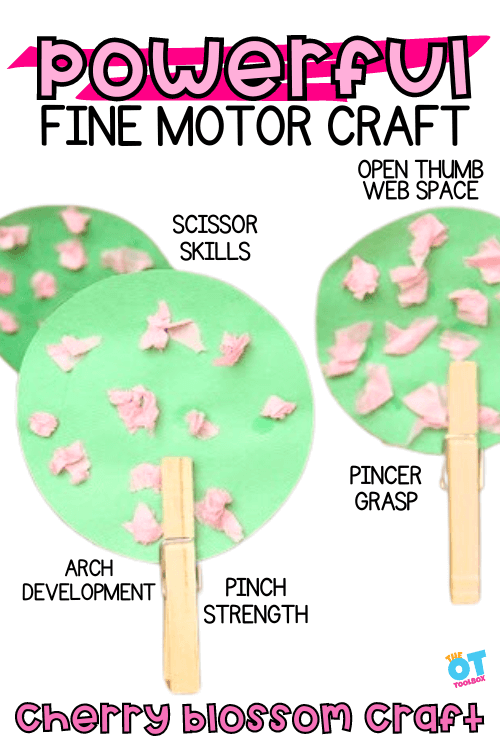
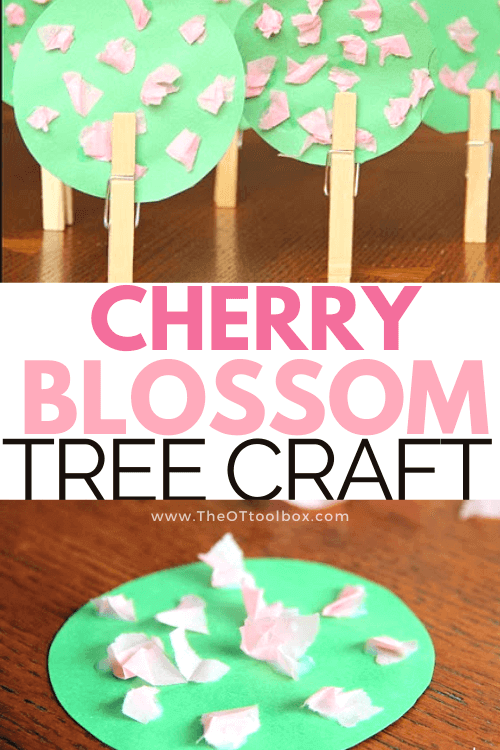

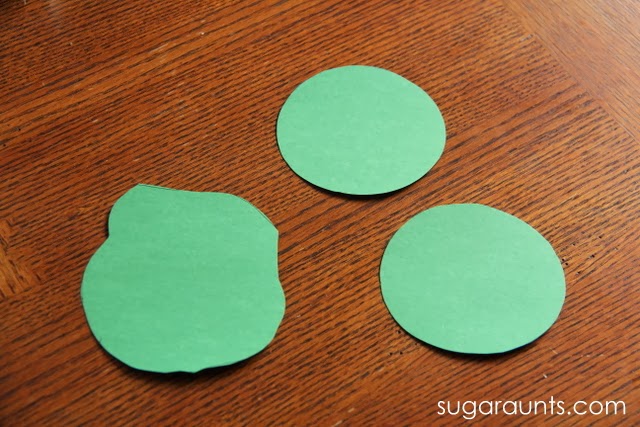

on the circles. Older kids could do this part. Squeezing the glue bottle is a great fine motor strengthening exercise for little hands.

